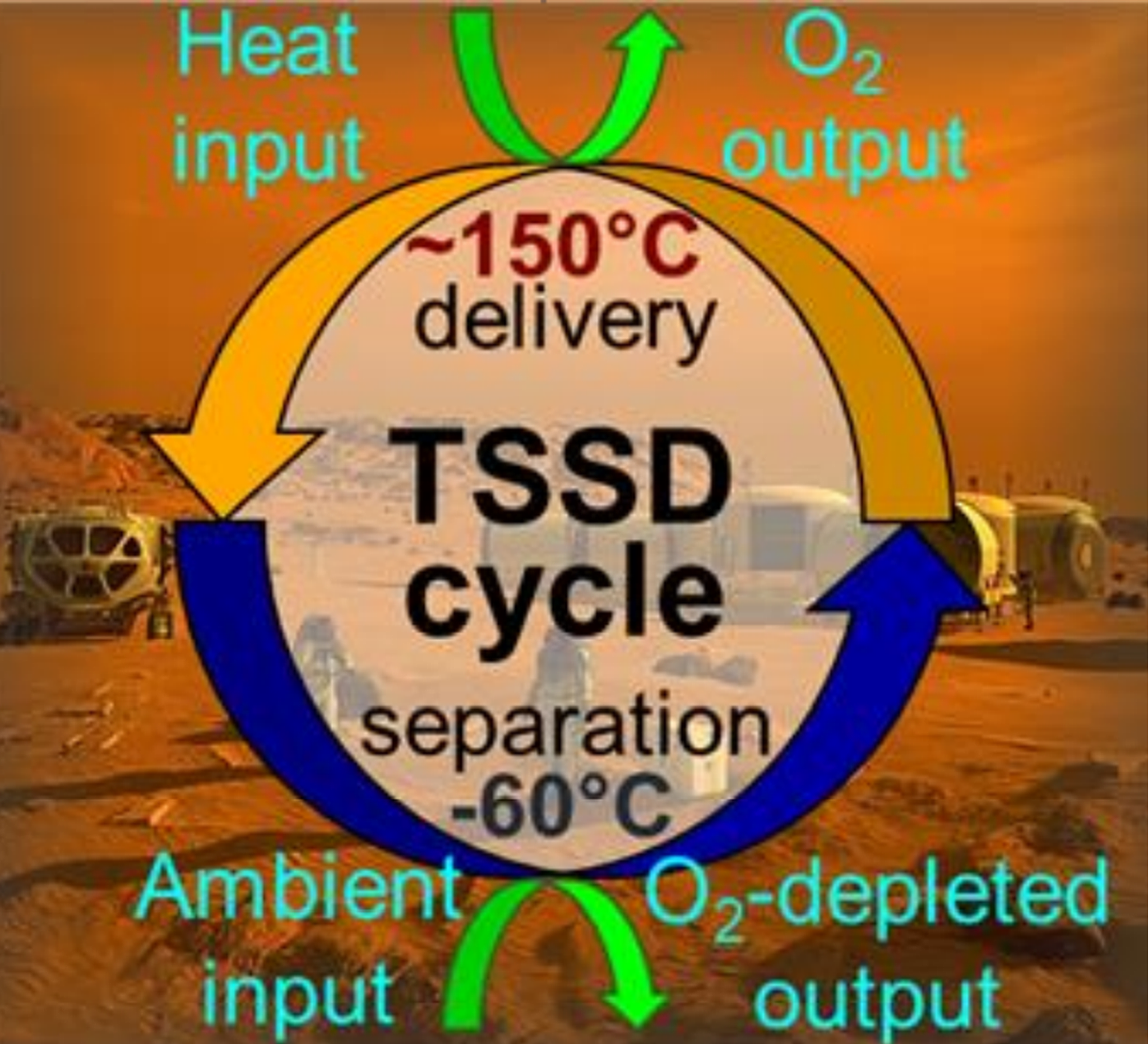Ivan Ermanoski
Arizona State University
We propose to evaluate, computationally and experimentally, the feasibility of a process–thermal swing sorption/desorption (TSSD)–to generate oxygen from the Mars atmosphere with 10x less energy than the state of the art, and bring other breakthrough performance improve-ments. The basis for TSSD is a two-step thermally-driven cycle operating below ~260 C. One of the critical challenges of human Mars missions is the need for in-situ resource utilization (ISRU), especially oxygen–both as Mars Ascent Vehicle (MAV) propellant, and for life sup-port. In addition to the MAV and habitation (same ISRU unit), a baseline “commuter” Mars ar-chitecture also envisions small, pressurized rovers for mobility and science. Reliable, portable oxygen generation could extend rover endurance, broaden the exploration zone from the habita-tion area, and increase the number of science and resource regions of interest accessible per mission. Further, larger exploration zones ease the tradeoff between landing site appeal (low risk to astronauts) and proximity to regions of interest (mission success). While desolate to humans, the Martian atmosphere nonetheless contains oxygen. Our approach is motivated by thermodynamics: the minimum theoretical work to separate oxygen from the Mars atmosphere is ~30-50 times lower than to obtain it by splitting carbon dioxide. Efficiency: TSSD is expected to be ~10x more efficient than MOXIE. For MOXIE, the target power requirement for oxygen propellant production is 30 kW. The TSSD estimate is only 4 kW; i.e., 90% less than MOXIE. Applying TSSD in rovers, the estimated power for oxygen pro-duction is only ~50 W/person. These advantages expand further if the input is heat, rather than electricity. Flexibility: TSSD has startup times of minutes (versus hours for MOXIE), and is inherently ca-pable of handling intermittencies and restarts. Sealant limits in MOXIE strongly constrain tran-sient tolerance. Simplicity and robustness: TSSD is exceedingly simple, inexpensive, and robust, with no mov-ing parts, and long life. Unlike MOXIE, TSSD is not susceptible to carbon deposition. The max-imum process temperature is ~260 C vs. 800 C for MOXIE. If successful as envisioned, TSSD will be a giant leap in Mars ISRU capabilities, and can be ex-pected to significantly improve and de-risk human Mars exploration. The potential to expand considerably the exploration zone is especially exciting, as it would allow a far more compre-hensive Mars exploration program than currently envisioned. Furthermore, TSSD-based Mars ISRU could pave the way for ISRU in many other environments of interest (e.g. Venus, Europa, or Titan), and ISRU of other gases of interest, such as water (vapor), nitrogen, and carbon mon-oxide.



























